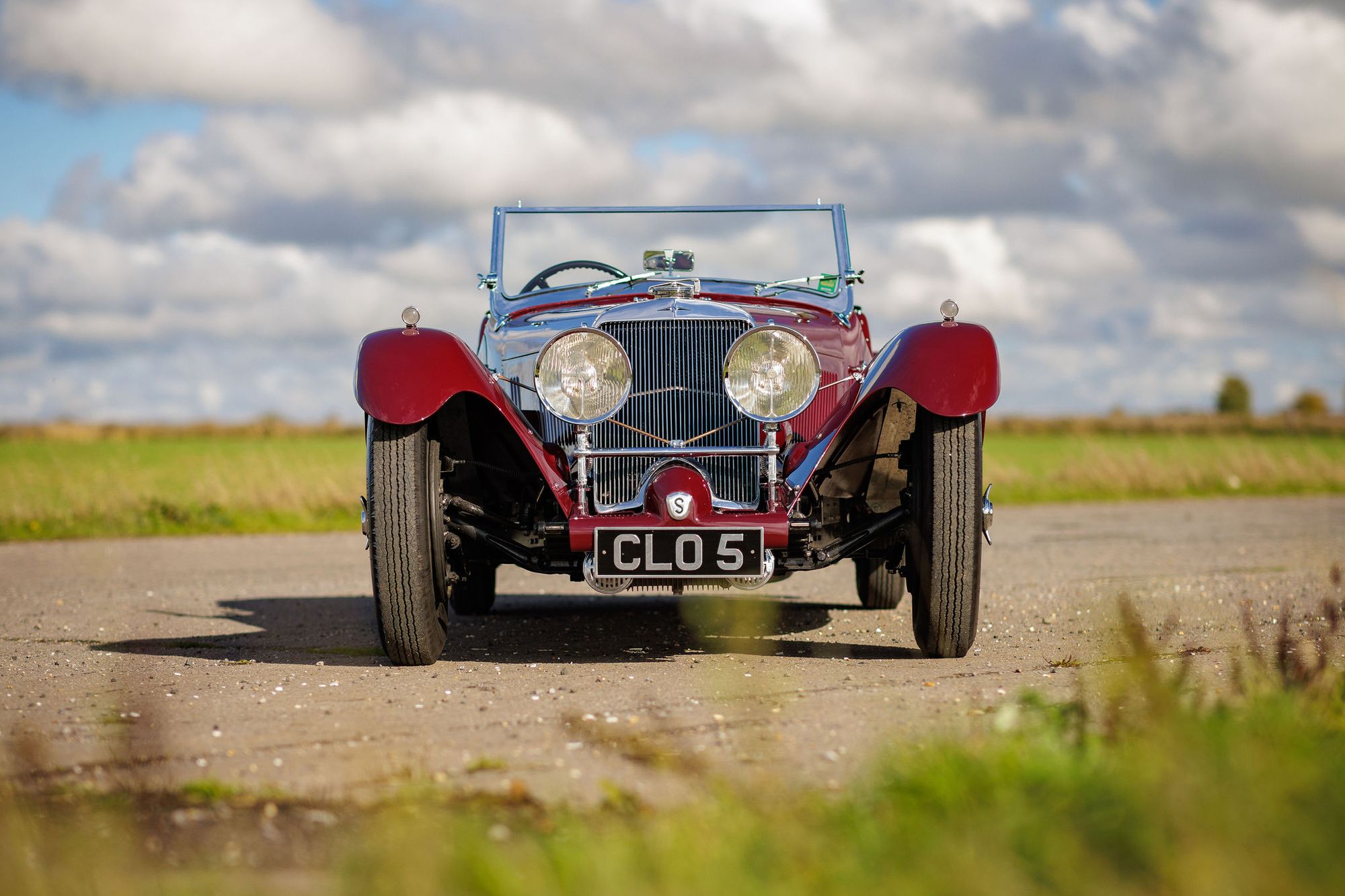

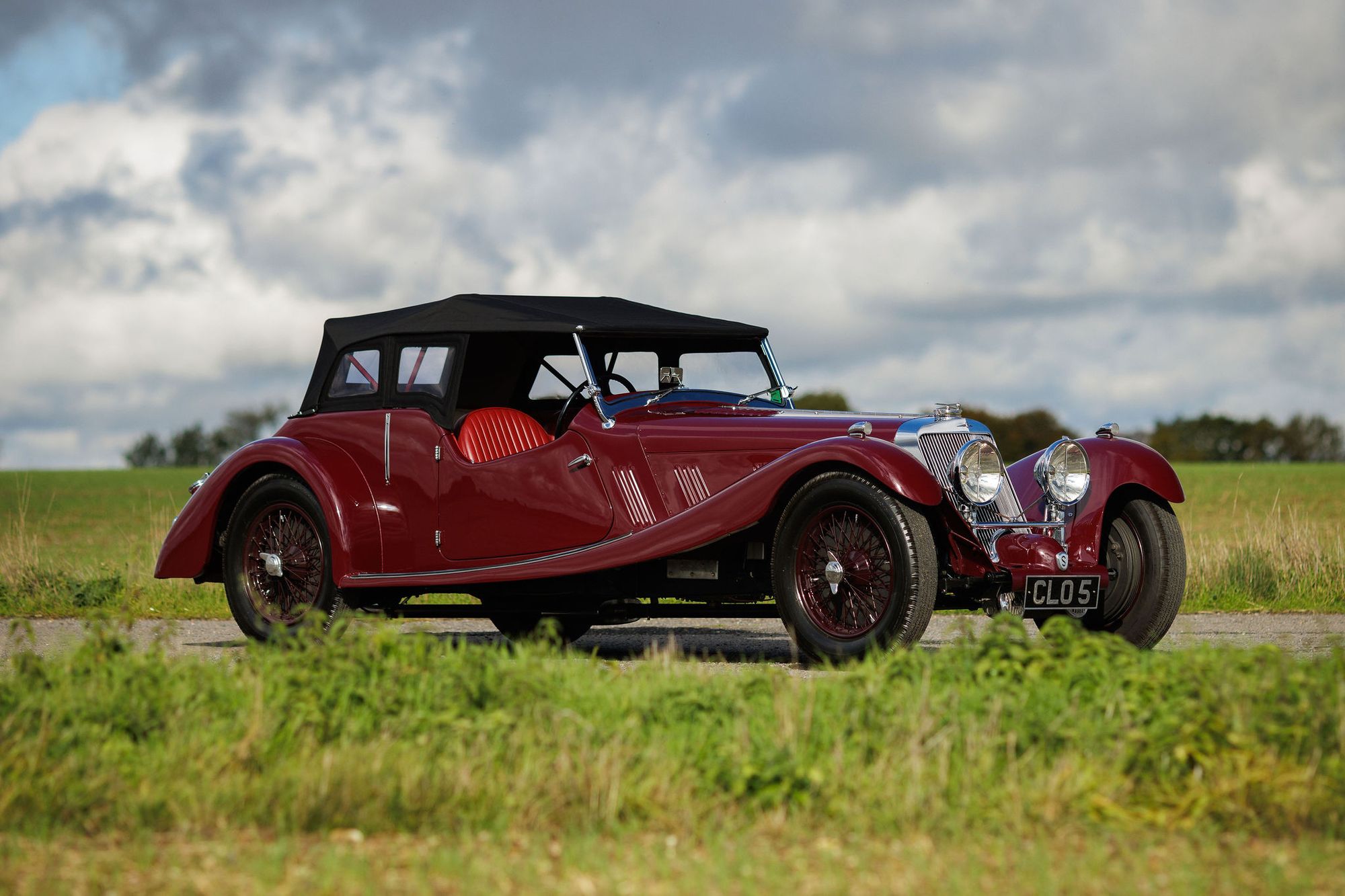

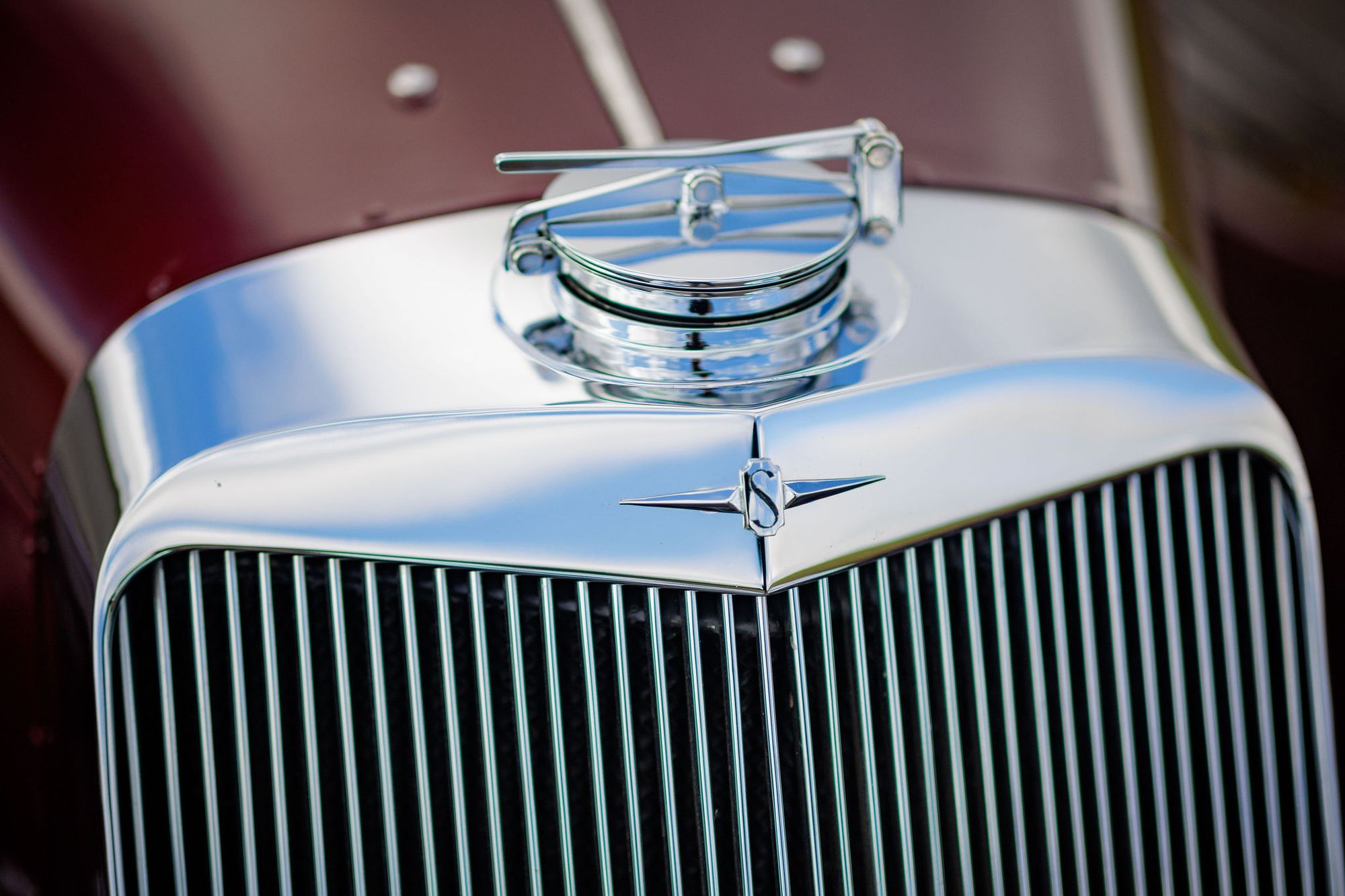



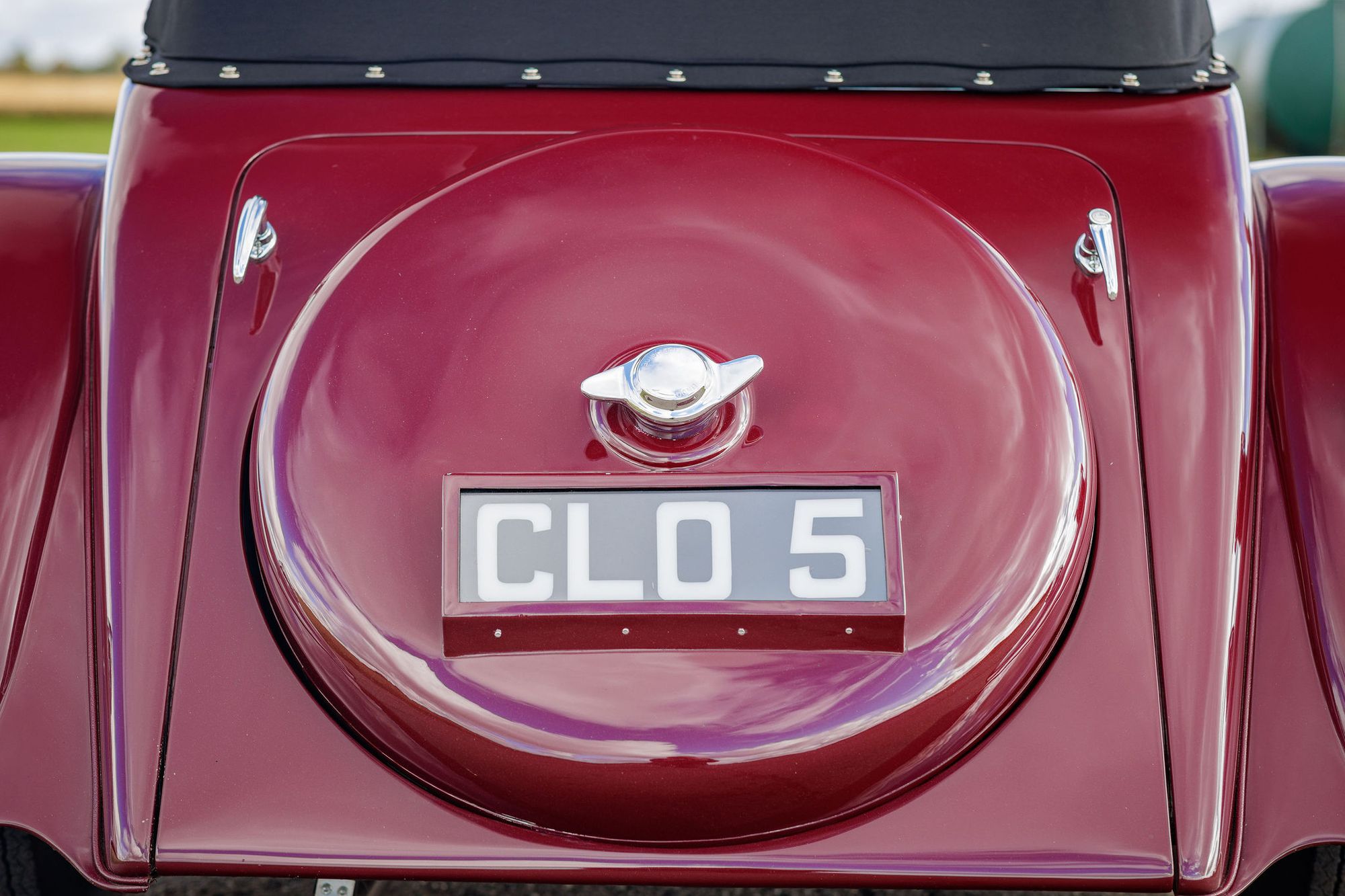

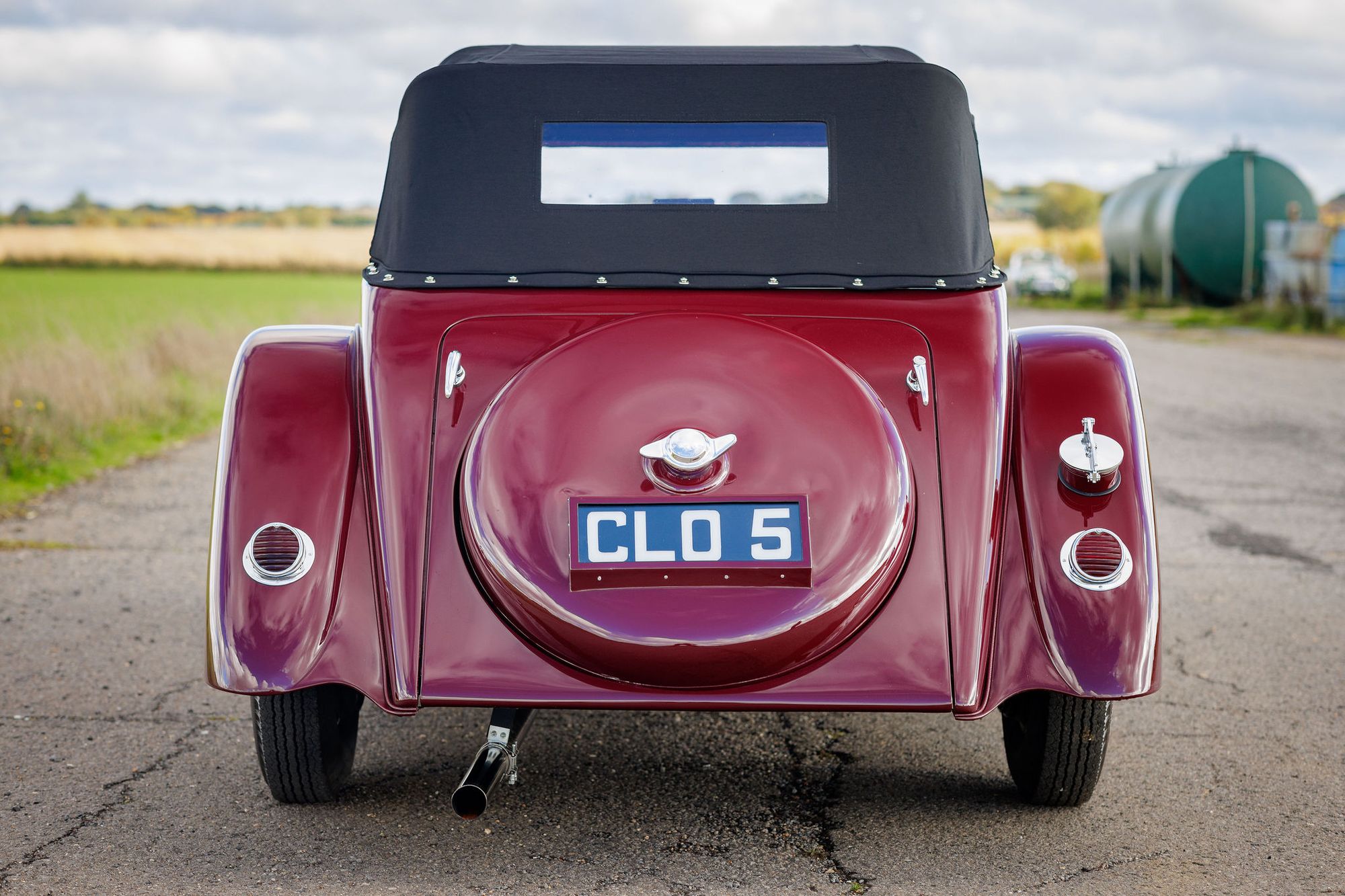

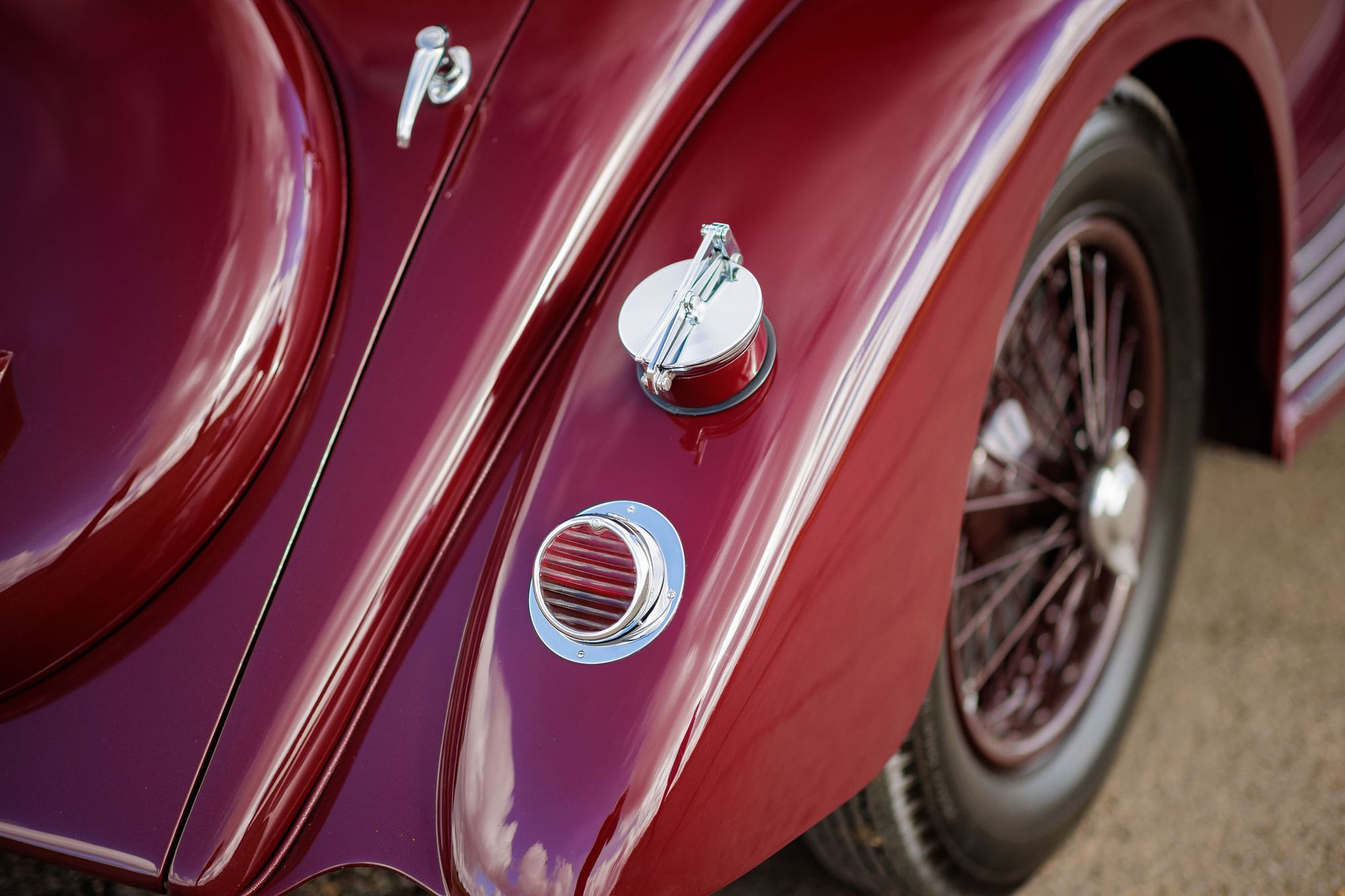





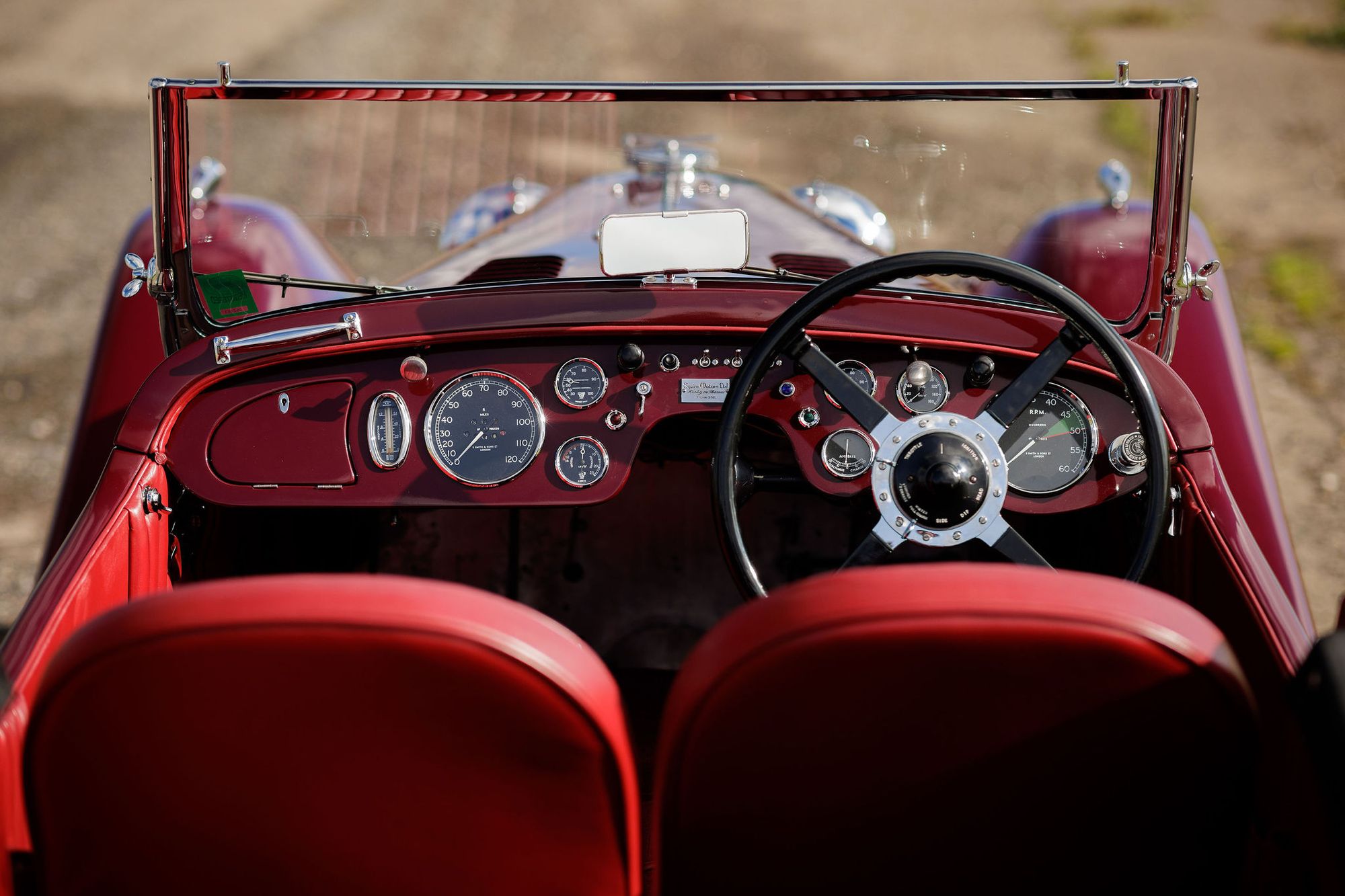

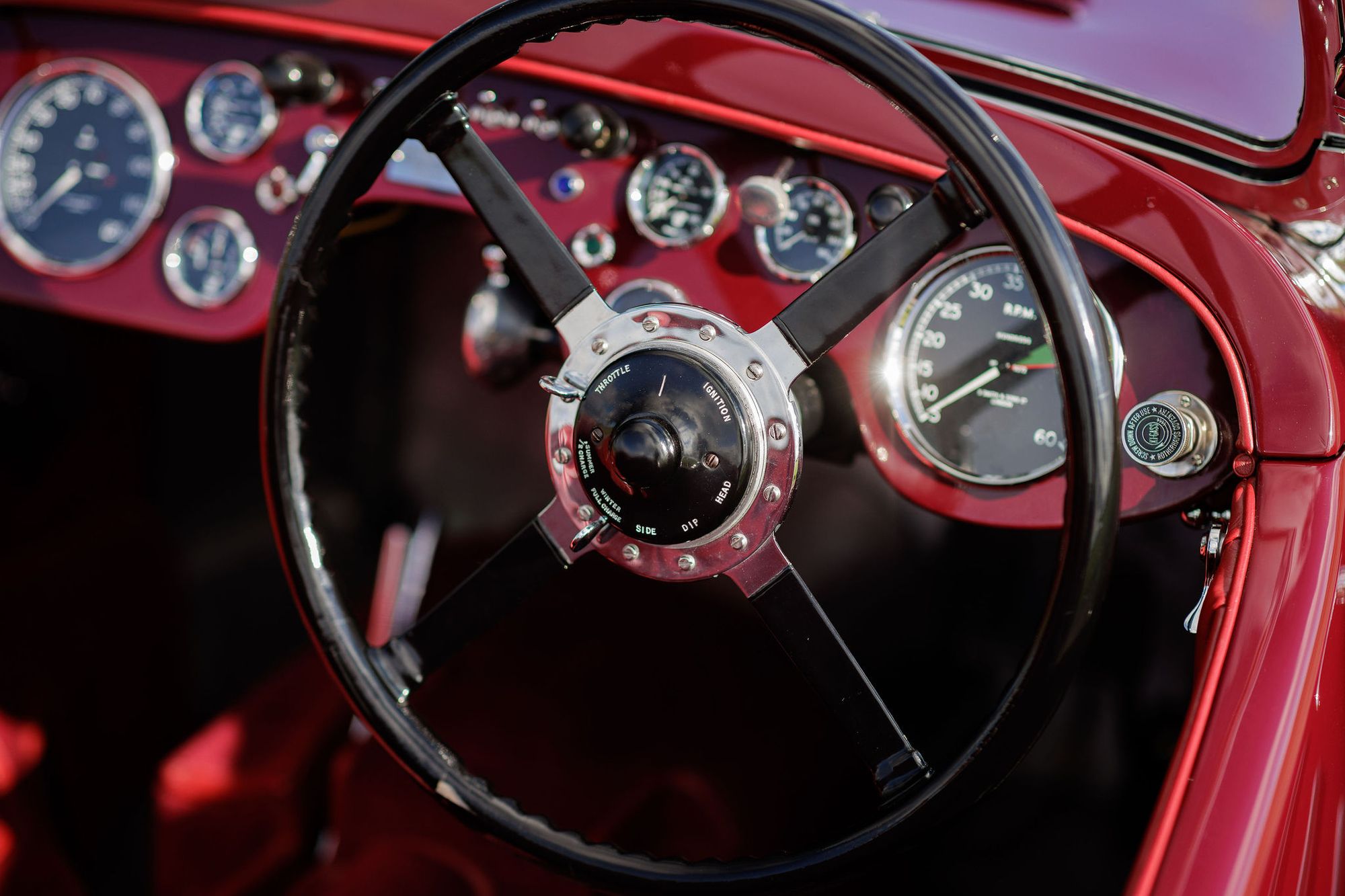

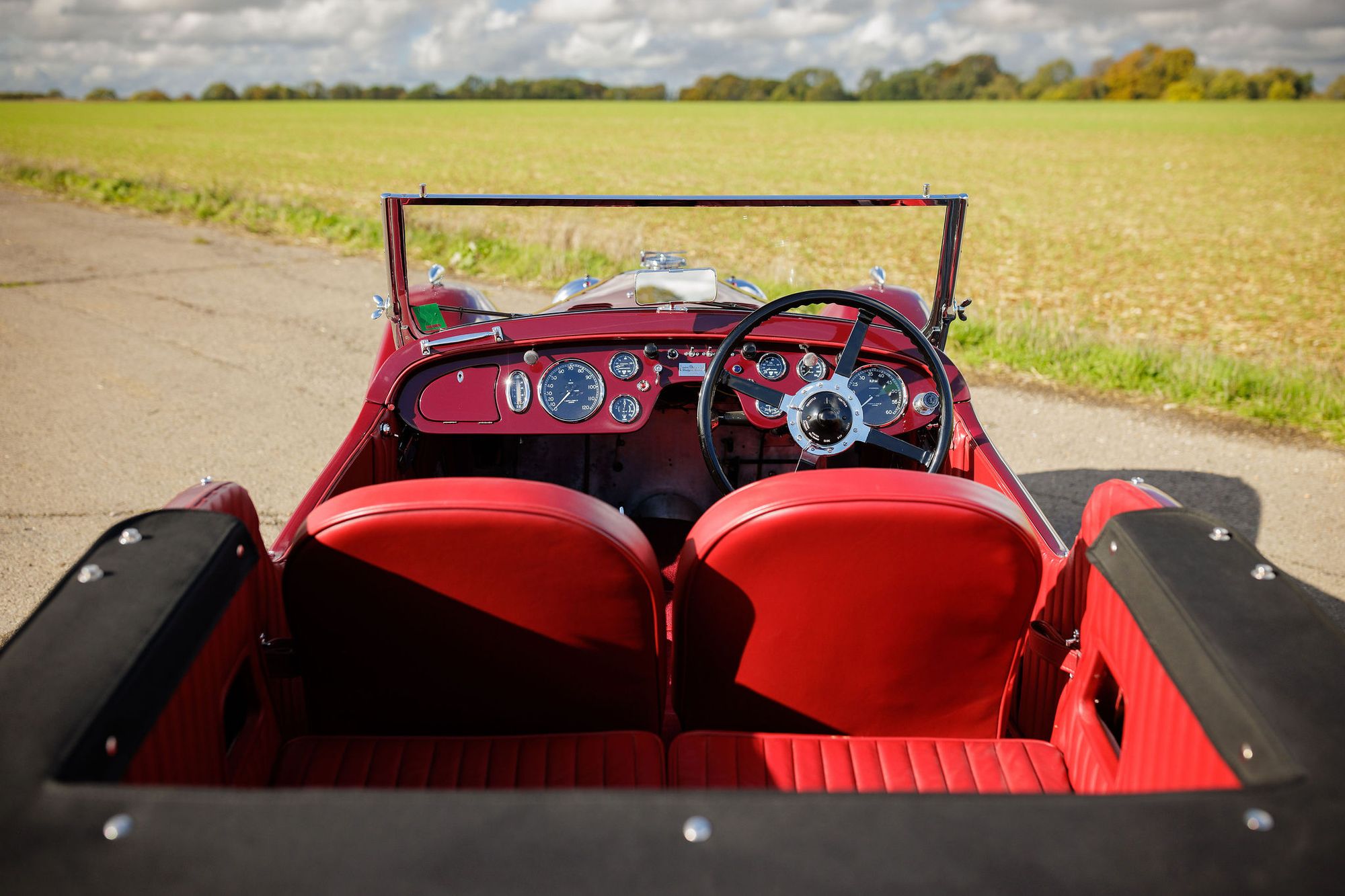

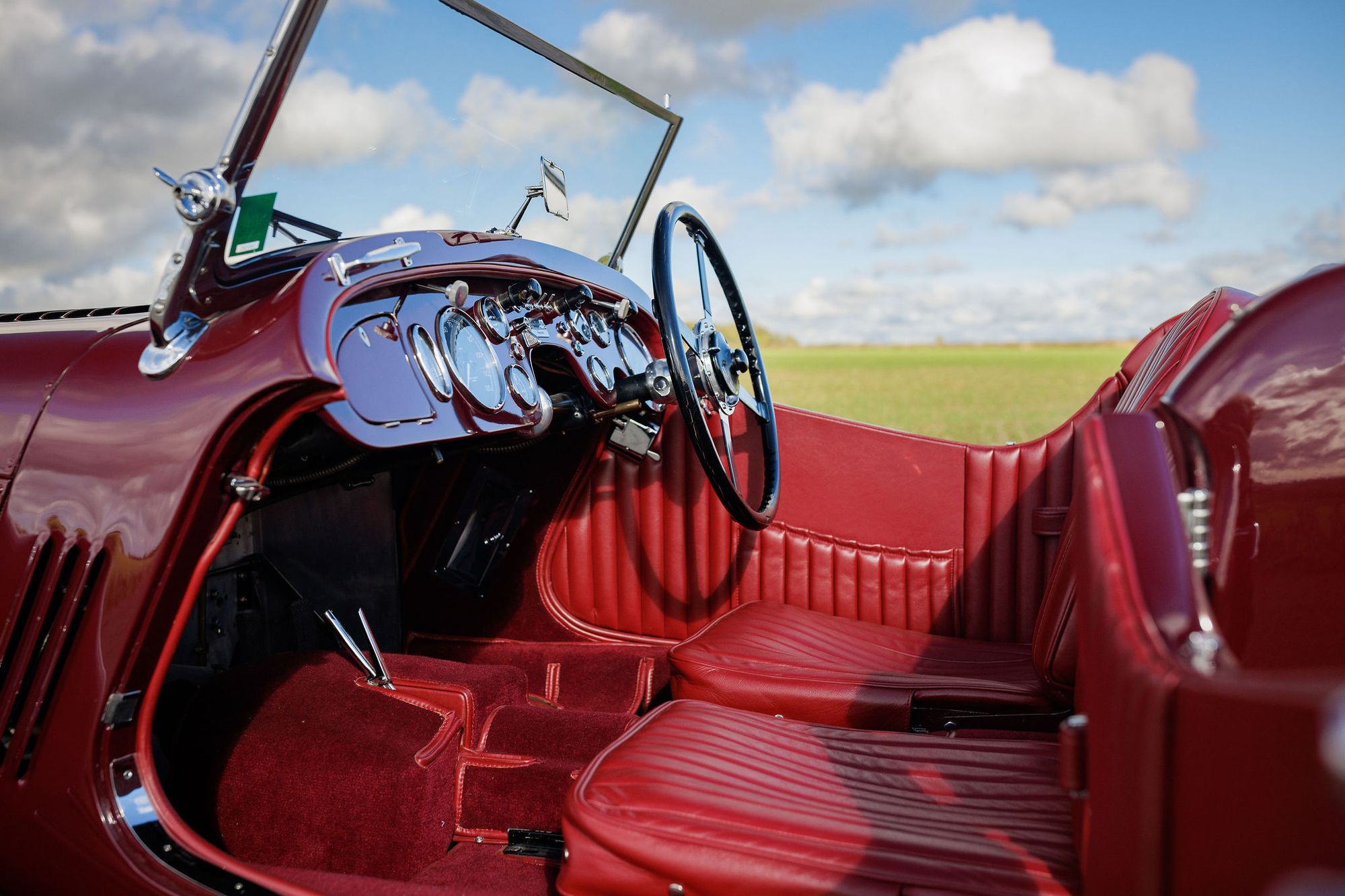

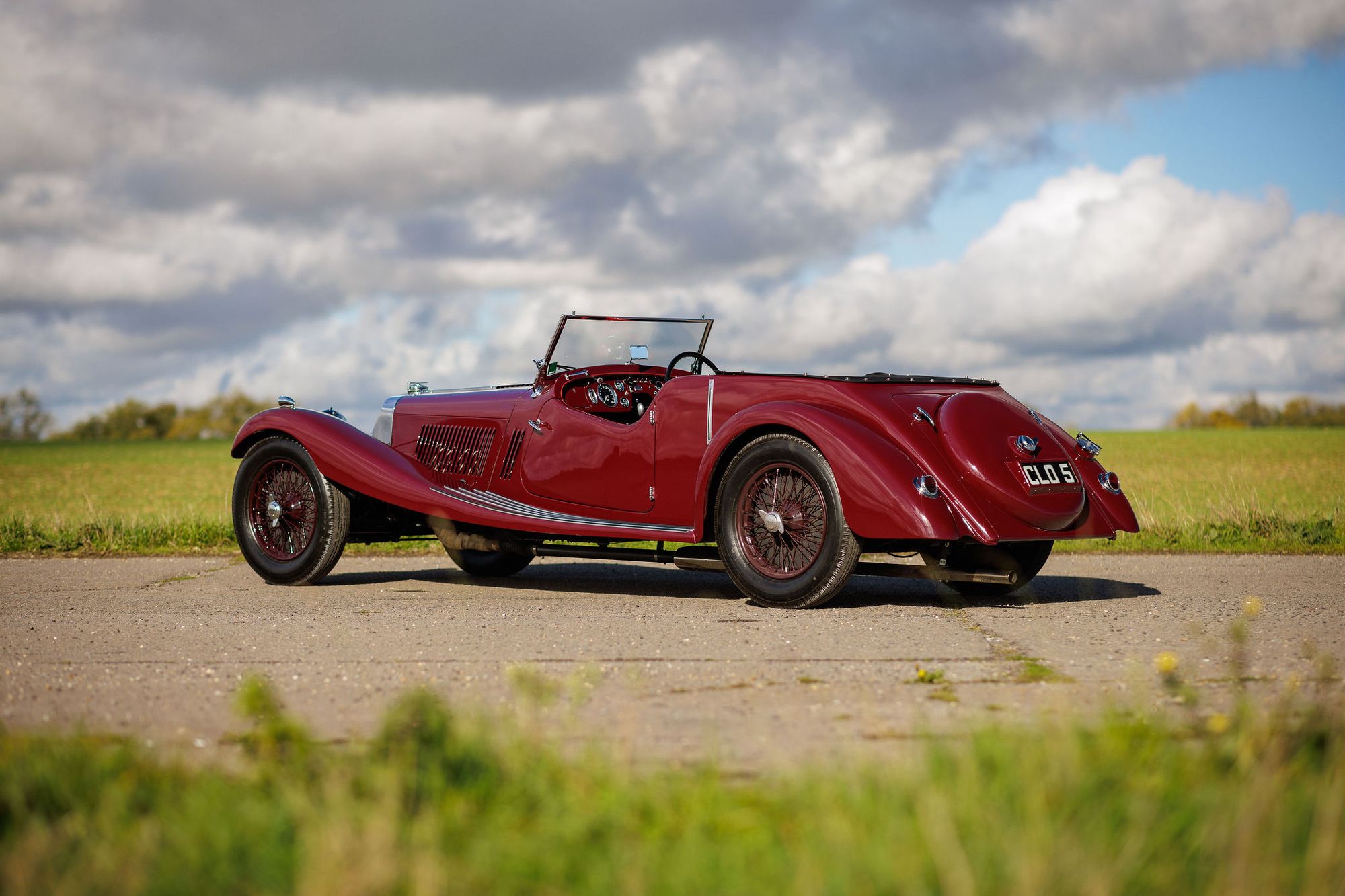

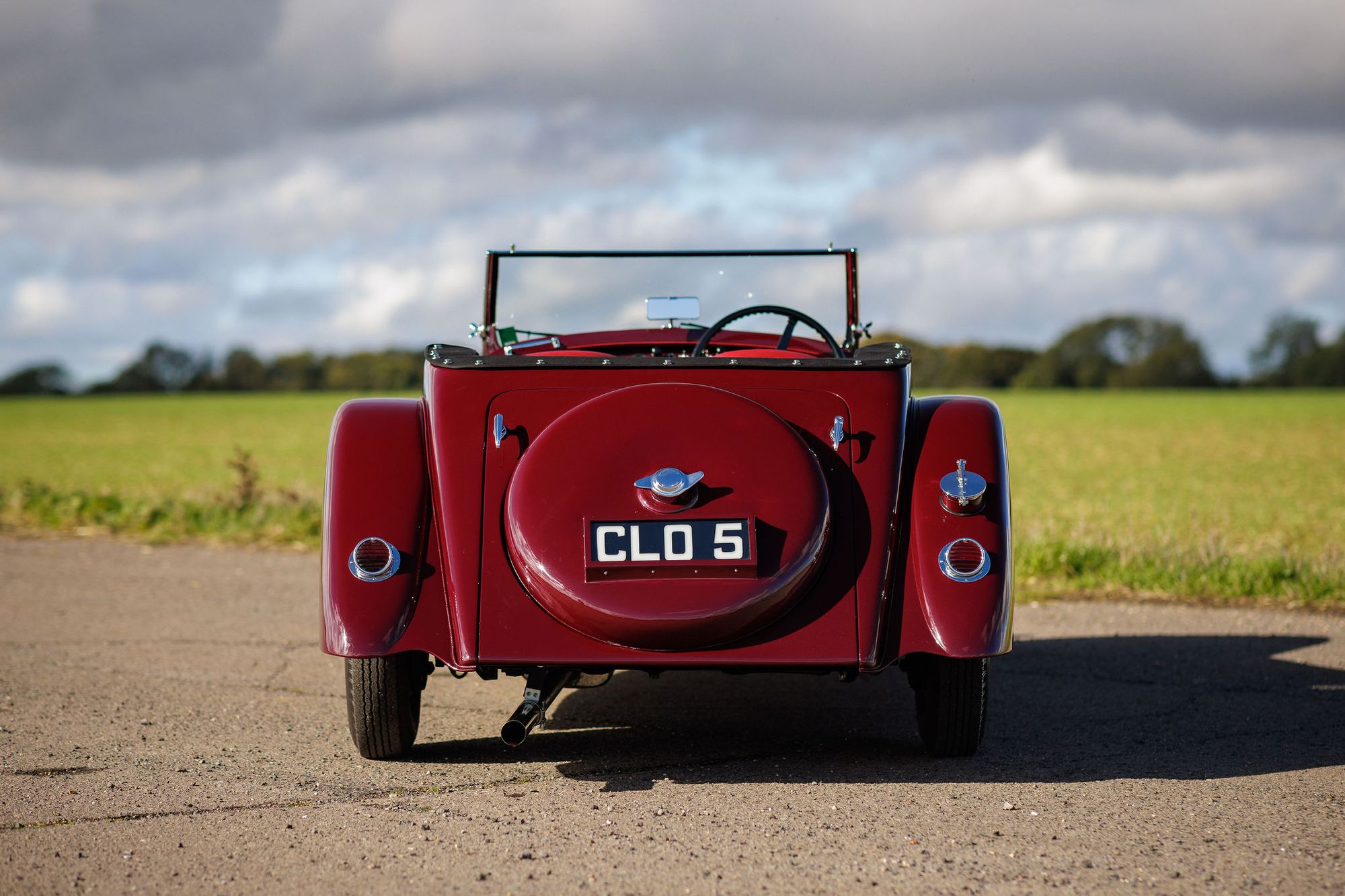

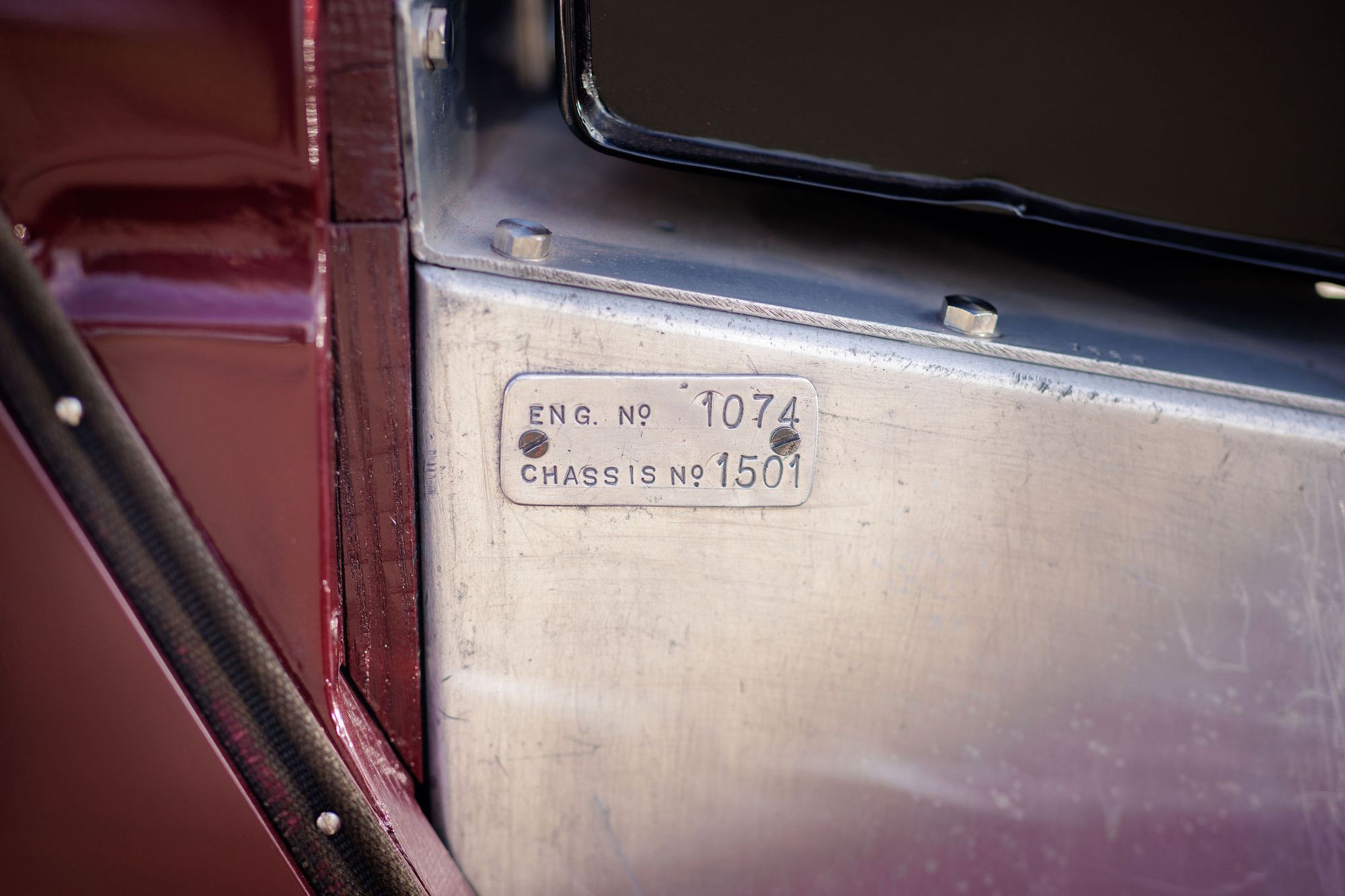

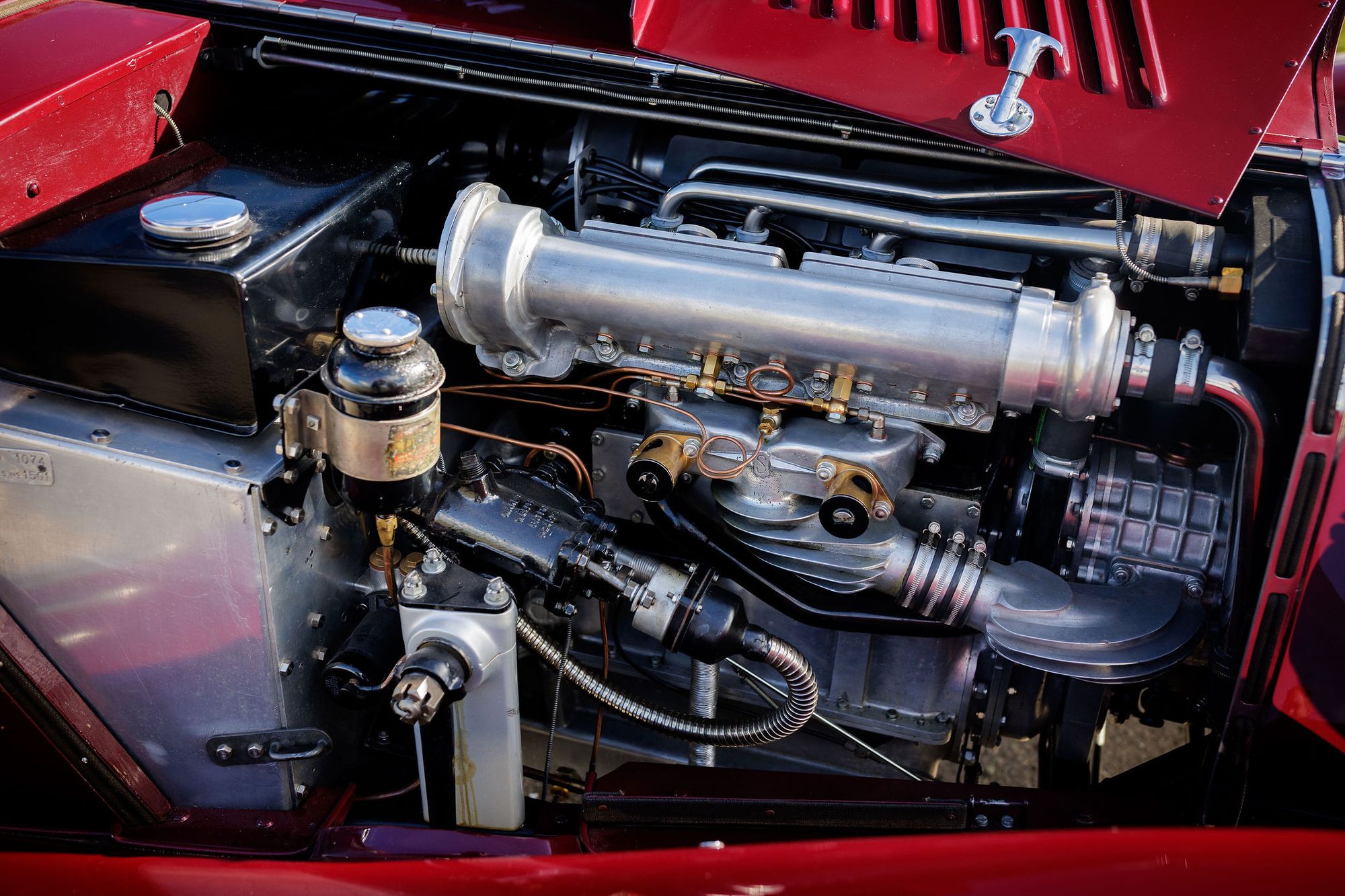

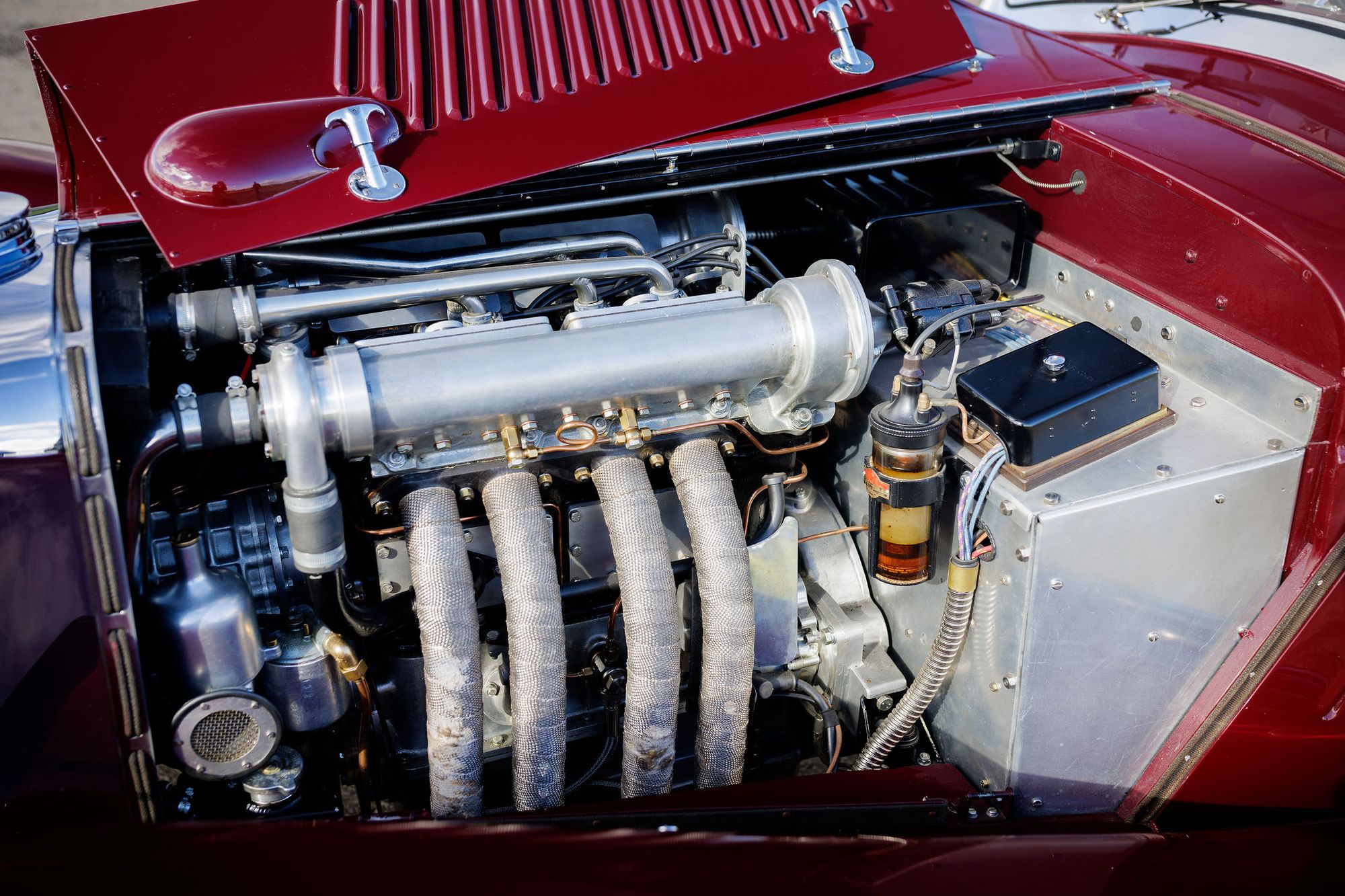

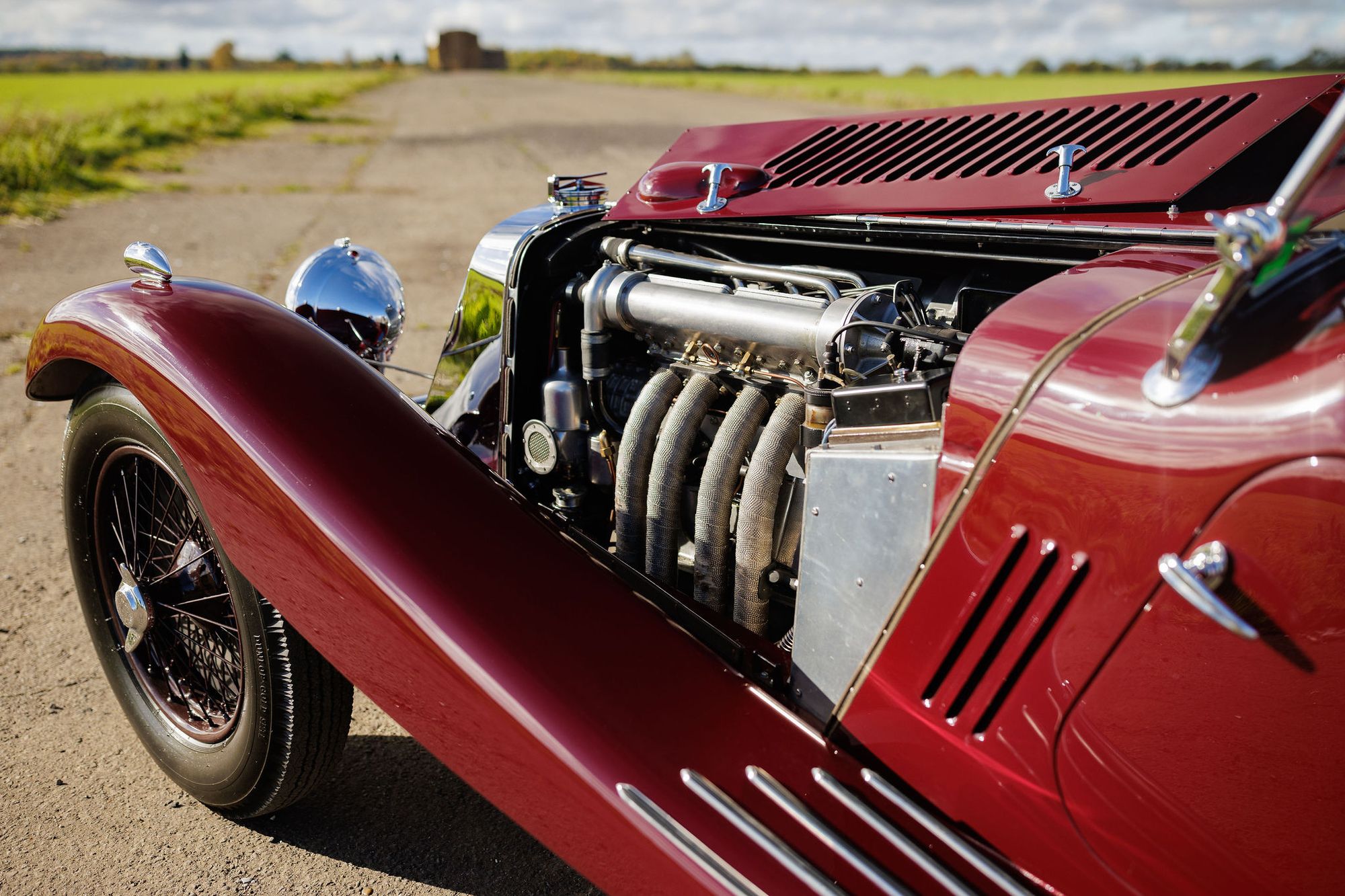

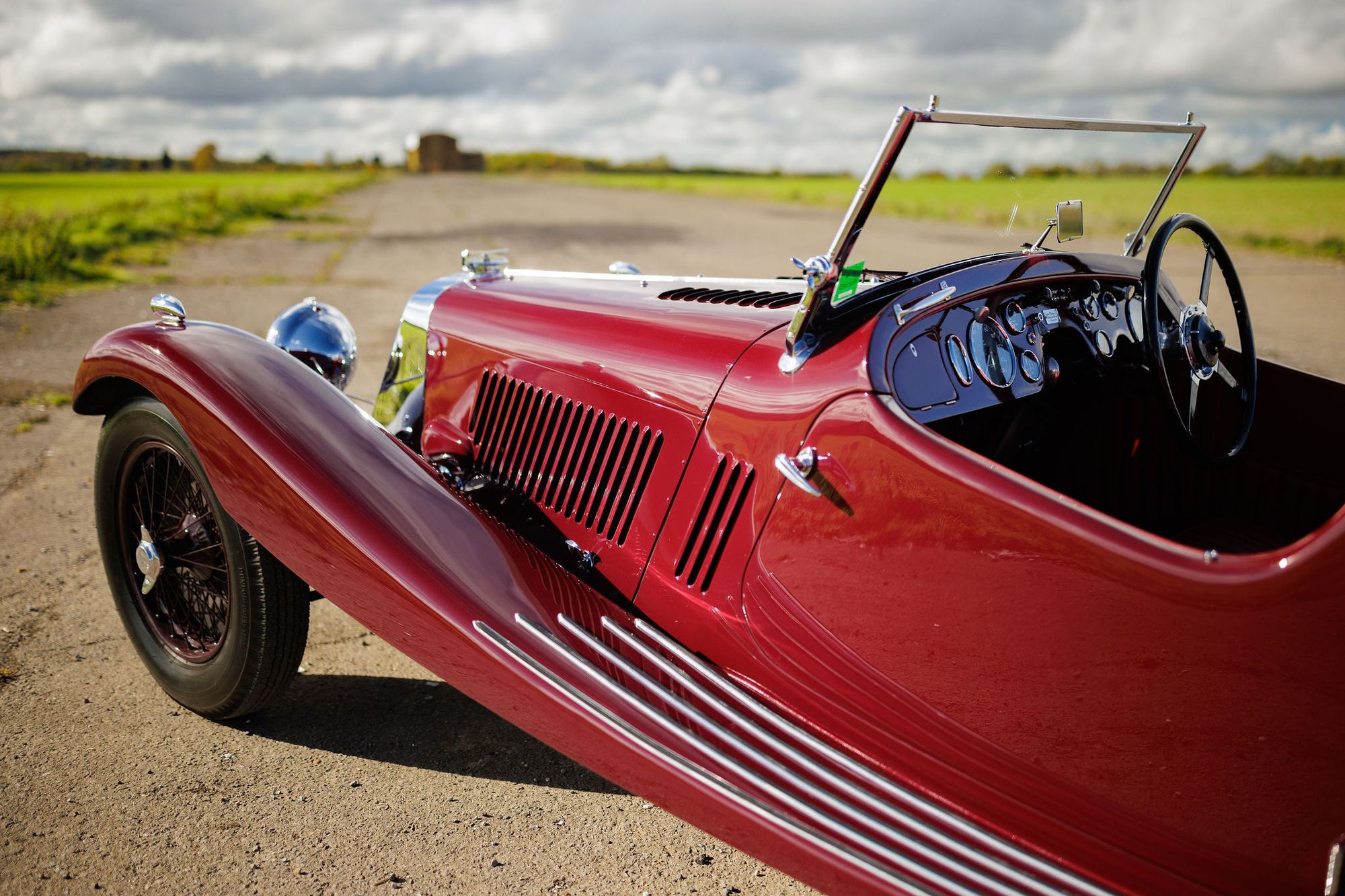



Adrian Squire was only 14 when he outlined the specification for his lightweight 1½-litre two-seater tourer. He then set about forging a career that would enable him to bring his dream to fruition. In 1929 he was briefly apprenticed to Bentley Motors before moving on to work for MG, and two years later felt confident enough to set up on his own, aged just 21. Initially they formed Squire Motors Ltd in 1931.
In 1934 Squire Car Manufacturing Company Ltd, was incorporated to build what Adrian believed would be one of the finest British sports cars ever produced.
Powered by the 1,496cc four-cylinder twin-overhead-camshaft engine, designed by Douglas Ross and built by British Anzani, which nevertheless was badged as a Squire. Fed by a David Brown supercharger, the Anzani motor produced its maximum of 110bhp at 5,500rpm, an increase of some 40 horsepower over the un-blown version. This was driven through an advanced Wilson ENV four-speed pre-selector gearbox. Placed in a stiff ladder frame (underslung for the long wheelbase) chassis with additional cross members for increased rigidity. Necessary to withstand the stresses imposed by the brakes, which of their time were extraordinarily effective with each corner having a massive 15 ½” diameter magnesium drum with cooling fins and Lockheed hydraulic operation.
Priced at £950 in chassis form, or £1,220 with Vanden Plas coachwork, the shorter Squire cost almost as much as the equivalent Alfa Romeo or Bugatti, while the long chassis variant was even more expensive at £975 (chassis) or £1,350 complete with drophead coupé body. Each car came with a guarantee that it had exceeded 100mph at Brooklands.
After the first three Squires had been built, all in short chassis form, the first of the long-wheelbase cars was completed; this was '1501', the car offered here, which was ordered by Valfrid 'Val' Zethrin, a wealthy enthusiast who had inherited a family fortune made in the Swedish steel industry. Rather than Vanden Plas, Zethrin chose to have his car bodied by Ranalah of Merton, Surrey. Ranalah supplied a four-seat tourer body, which was finished in maroon and trimmed in dark red leather.
Registered 'CLO 5' by the London County Council, Val Zethrin's car was one of three Squires entered in the 1936 RAC Rally, though he failed to finish. Interviewed for Sporting Motorist magazine in 1962, Zethrin revealed that he used the Squire for 'racing, rallying and plain ordinary driving', going on to state that (it) 'remains the safest car I have ever driven, having superb road holding and magnificent brakes'. Furthermore, he considered the handling superior to that of the short-wheelbase model.
Having built and sold just seven cars, five short and two long, Adrian Squire sold his company and joined Lagonda and thence to the Bristol Aeroplane Company. He was killed in Bristol during an air raid in September 1940 at just 30 years old.
But the Squire story did not end in 1936. Val Zethrin had been represented at the creditors' meeting and succeeded in buying the company's name and assets, which included sufficient parts to build two further short-chassis models. Of the nine Squires built, six of the originals survive together with both of the Zethrin-assembled cars.
Zethrin also took the opportunity to modify his own car, commissioning a bespoke aerodynamic radiator cowl from Serck to improve on the original exposed radiator. This was done in time for the Junior Car Club's Members' Meeting at Brooklands in July 1937, at which Zethrin won a one-lap handicap race at 87.5mph. Following an accident, Vanden Plas repaired Zethrin's Squire and at his request altered the wings to achieve a more enveloping profile. Later in 1937 Zethrin sold 'CLO 5', its next owner being a friend of his, Thomas Walker Gibson, chief engineer at the Sydenham Gas Works. Gibson took the opportunity to drive the Squire around Brooklands at 100mph prior to purchase.
During WW2 'CLO 5' was laid up at the premises of Gibson's employers in Forest Hill which, although a target for the Luftwaffe, miraculously came through the war unscathed. The Gibsons had previously used the Squire for continental touring and resumed this activity after the war's end, often travelling to France and Norway. Thomas Gibson eventually sold the Squire around 1955, and the car is known to have passed through the hands of various motor traders before finding a new owner in the USA circa 1957.
In October 1959, the Squire was bought by Bill Comer of Lake Park, Florida, who did little with it, and on his death in 1974 passed to Walter Weimer of Washington, Pennsylvania. Weimer embarked on a restoration, reversing some of the changes made by Val Zethrin, which included removing the radiator cowl and returning the front wings to their original shape. The restoration made little more progress, and in the early 1980s Weimer sold the Squire to noted collector, Henry Petronis, who likewise did little with it.
Having changed hands, the Squire next appeared in public at Rétromobile, Paris in 2011 where it was spotted by the current vendor. Despite the passage of time and its many changes of ownership, 'CLO 5' turned out to be remarkably complete, the only significant items missing being the quick fillers for the radiator and fuel tanks, and the scuttle-mounted oil reservoir. The new owner's guiding principal for the restoration 'was to retain as much as possible of the original fabric of the car as possible'. The engine rebuild being entrusted to experienced Anzani specialist, Tim Abbott, while Cecil Schumacher overhauled the pre-selector gearbox.
Early in 2013 the rolling chassis was delivered to world renowned specialists, Classic Motor Cars (CMC) of Bridgnorth, Shropshire where most of the work was undertaken in house. Stripped of its panels, the ash body frame was rebuilt by Jarvis & Son of Neenton, Shropshire retaining as much of the original timber as possible. CMC restored the body, straightening the chassis and fabricating a new radiator shell to replace the twisted original. Traces of the original maroon paintwork were found during the restoration, and these were used to determine the correct paint colour prior to the re-spray and the interior was re-trimmed. After some 4,100 man-hours of labour, the restoration was completed in May 2015 and the owner declared himself 'delighted' with the result, which saw the Squire returned to the condition it would have been in when collected by Val Zethrin back in 1935. Four months after the project's completion, the rebuilt Squire made its public debut at the Royal Concours of Elegance held at the Palace of Holyroodhouse, Edinburgh, while in May 2016, 'CLO 5' was invited to the prestigious Concorso d'Eleganza at Villa d'Este, Italy where it received a 'Mention of Honour' in its class. Later that same year the Squire spent a week on display in the Rotunda at the RAC's headquarters in London.
As one would expect of a car of such historic importance, the Squire comes with an extensive history file, which remarkably includes an extremely rare original Squire brochure. In addition, the file contains assorted correspondence, various magazine articles, period photographs, restoration invoices, a UK V5C Registration certificate, and a FIVA Identity Card. Whilst other surviving examples of this marque are long term fixtures in some of the world’s most admired collections, including those of Dr Fred Simeone and Arturo Keller, its fair to say that this is a significant opportunity. This fabulously restored model as they say ticks all the boxes. Rarity, one-off bodywork, period competition history, technologically advanced, well documented. Even sounds good!